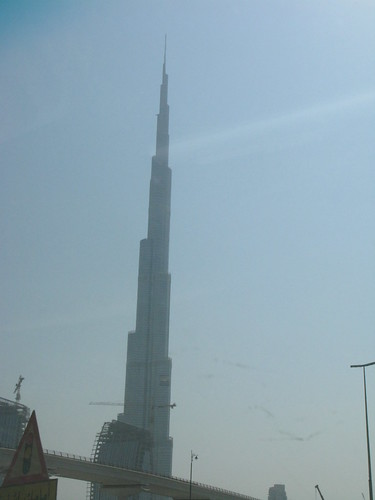I suppose it’s inevitable that most blog posts during Ramadan focus on food and fasting in some way. After all, that is the defining act of piety in Ramadan. The act of fasting also tends to dominate most news stories during Ramadan about Ramadan. This story however has a twist – it’s more about the mechanics of how we calculate the fasting interval rather than the act of fasting itself:
DUBAI, United Arab Emirates: Muslims living in the world’s tallest tower will have to wait even longer to break their fast during the holy month of Ramadan.
Mohammed Al-Qubaisi, Dubai’s top Muslim cleric, said Sunday that Burj Khalifa residents living above the 80th floor should wait two additional minutes to break their dawn-to-dusk fast while those above the 150th floor must wait three extra minutes because they will be able to see the sun longer than those on the ground.
The half-mile high tower has 160 habitable floors.
Al-Qubaisi said the decree is similar to those relating to Muslims traveling on airplanes, and harkens back to a time when people living in the mountains broke their fast after those at lower elevations.
Three minutes is less a statement of hardship and more a reflection of the scale of the technological achievement of the Burj – but it’s worth noting that this, too emphasizes just how central science and mathematics are to our most fundamental religious practices. This is a point I return to in my defense of the calendar vs moonsighting debate, as well.
It occurs to me that the ideal prayer timings calculation should indeed take elevation into account. Until smartphones include an altimeter, however, that’s not very feasible…
Here’s a picture I took of the Burj, then still under construction, a couple of years ago while transiting through Dubai. Just imagine a hungry muslim at the top looking enviously down through a telescope at another muslim eating a shwarma at ground level!

